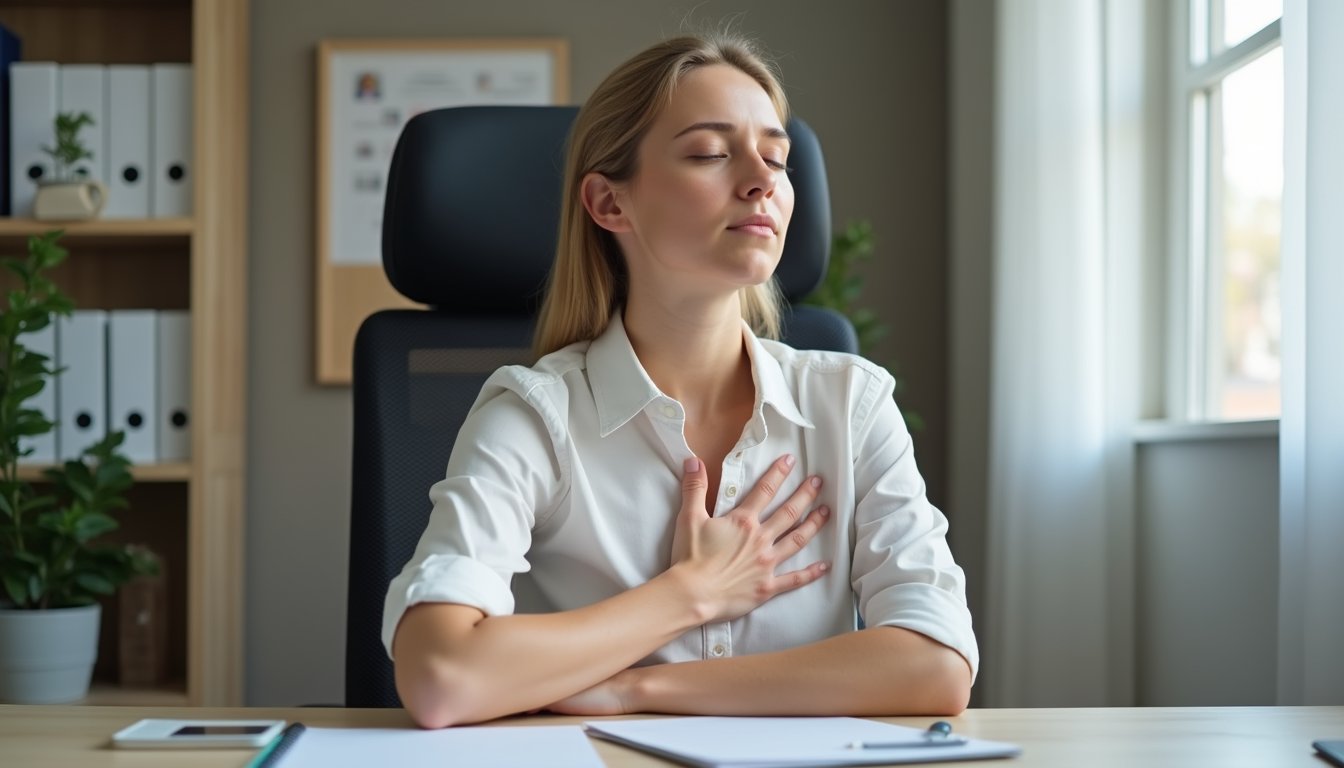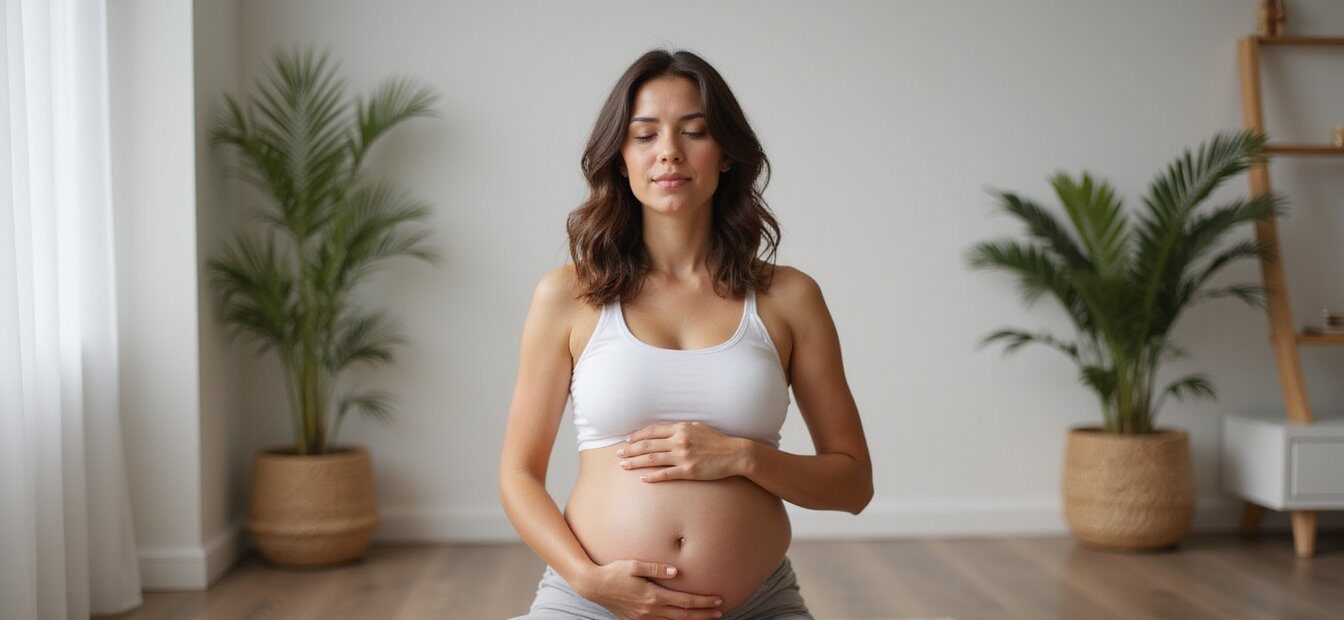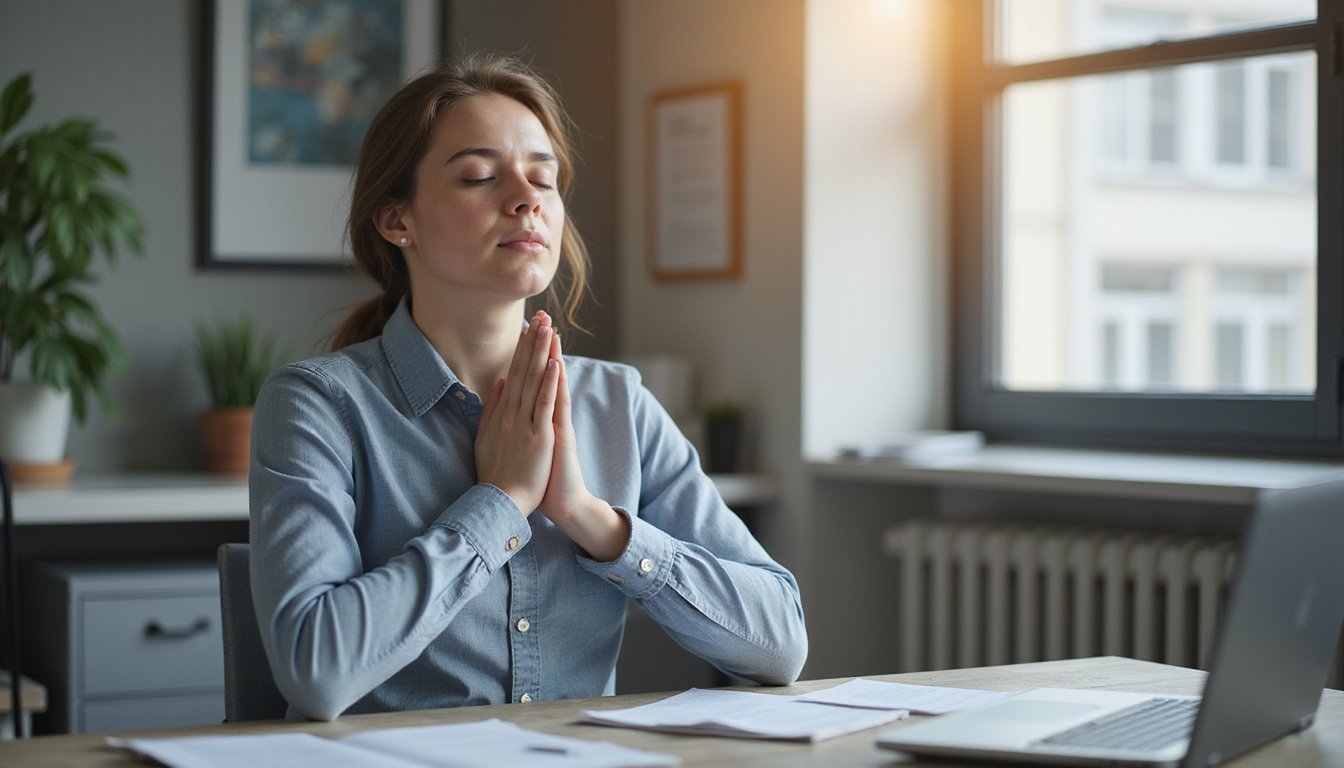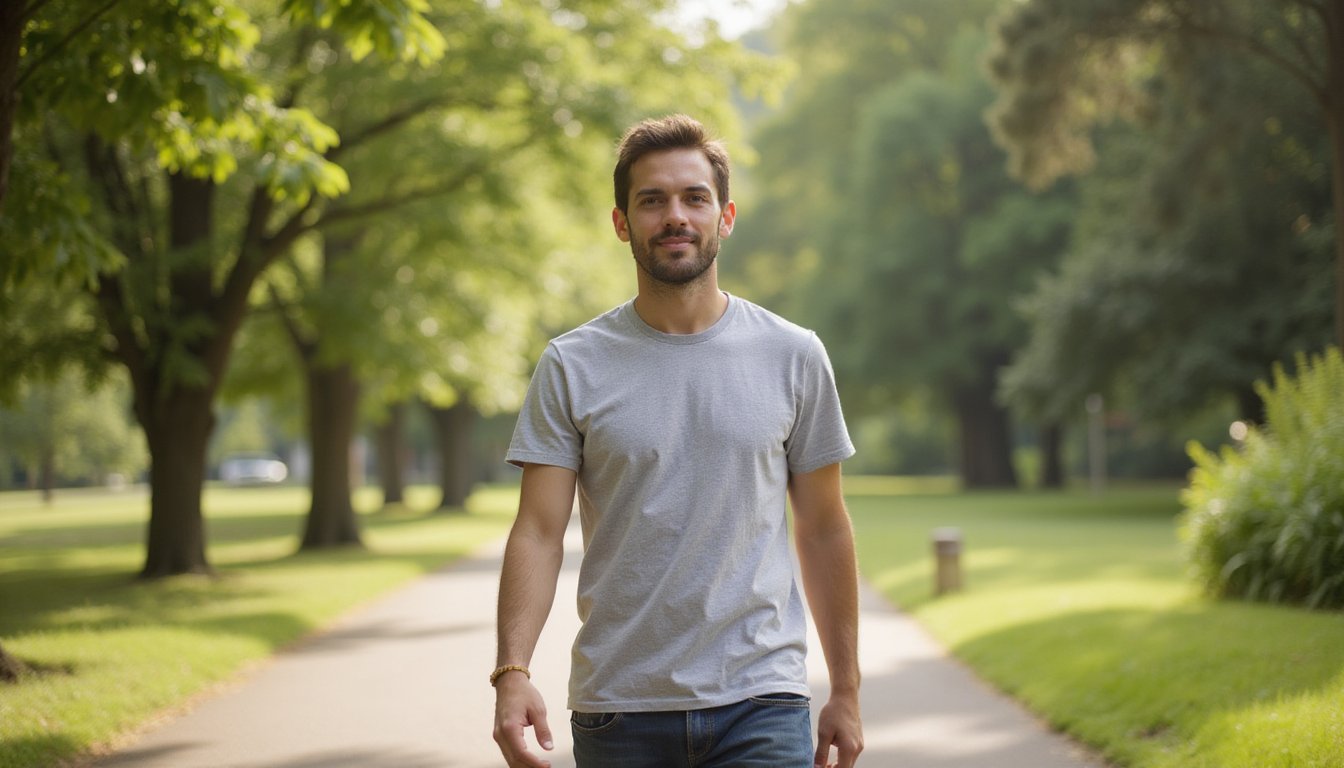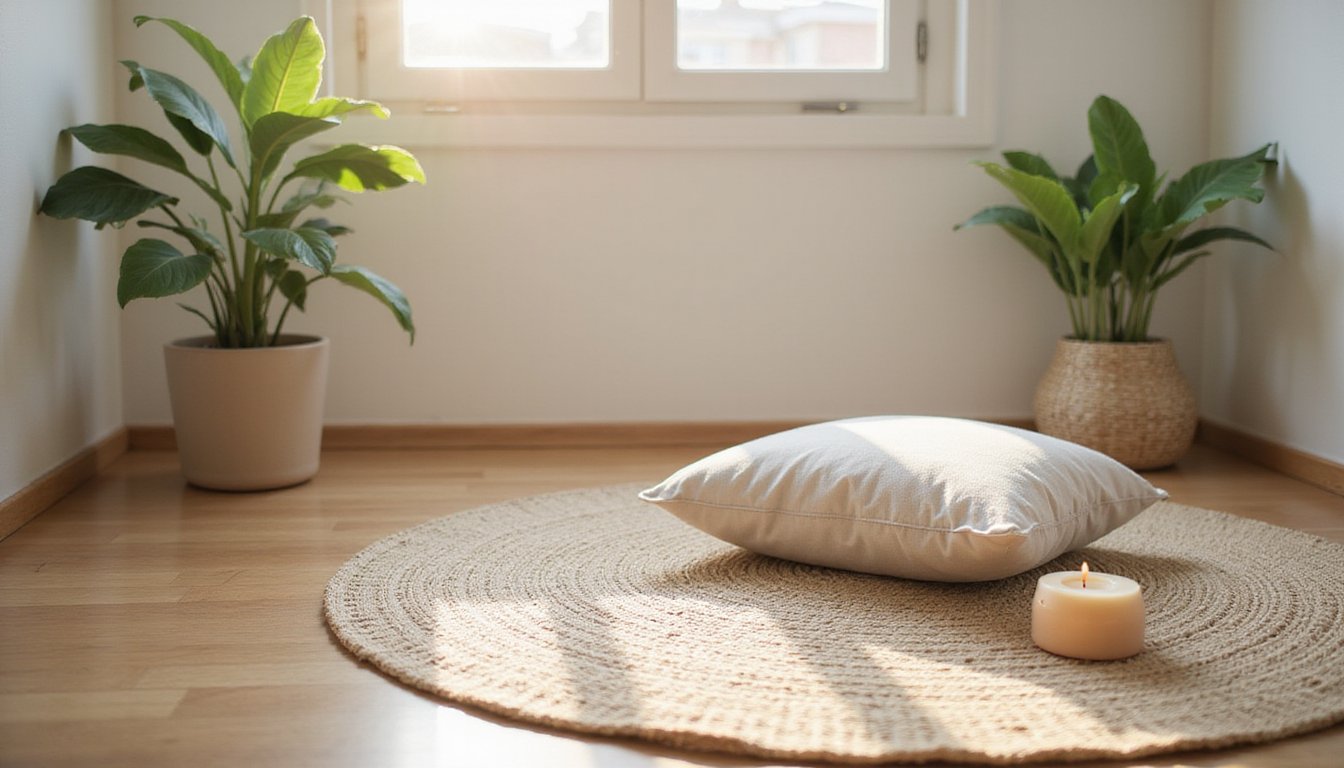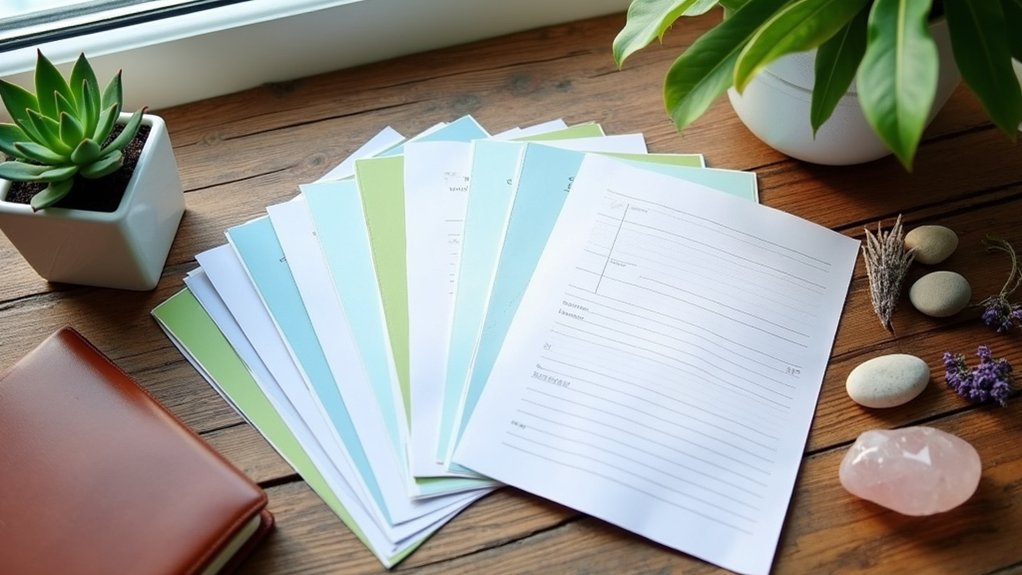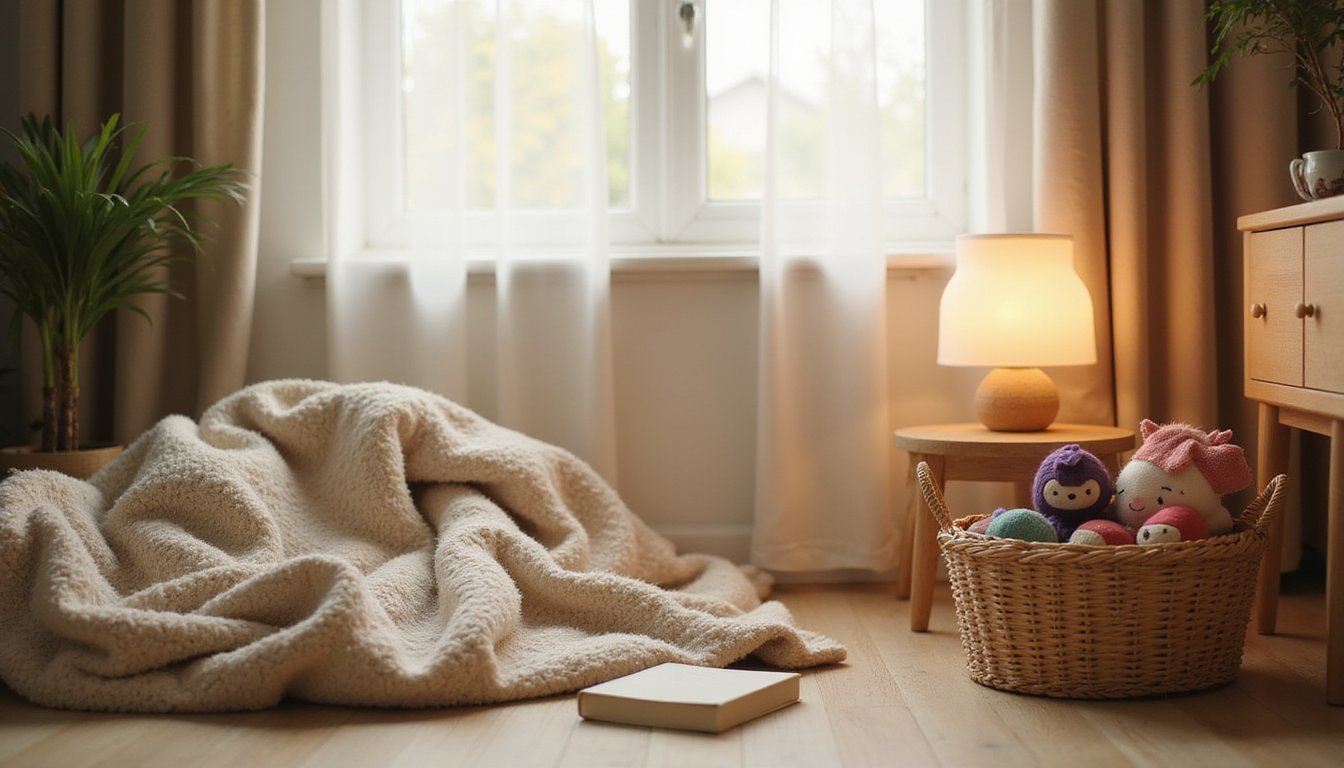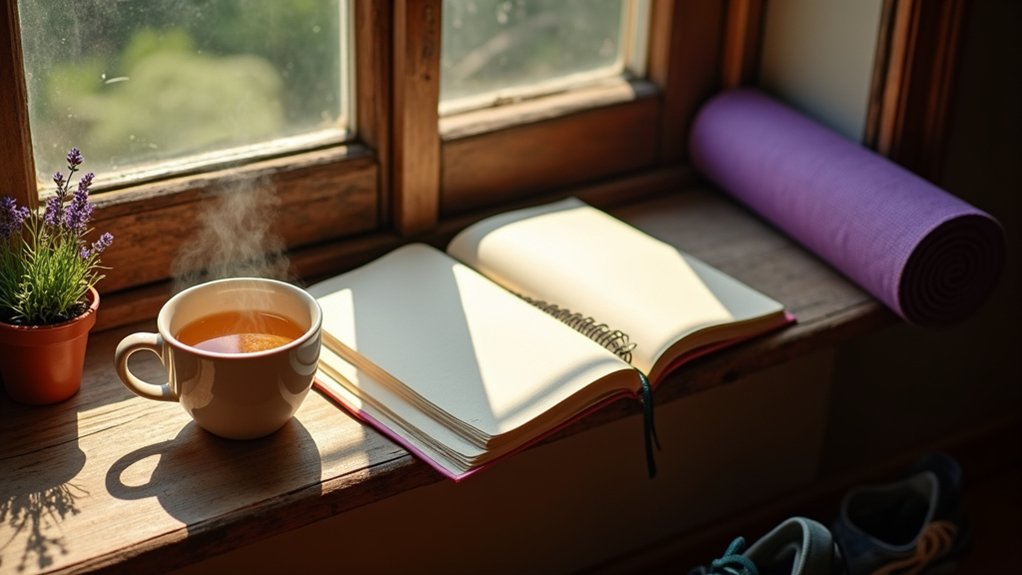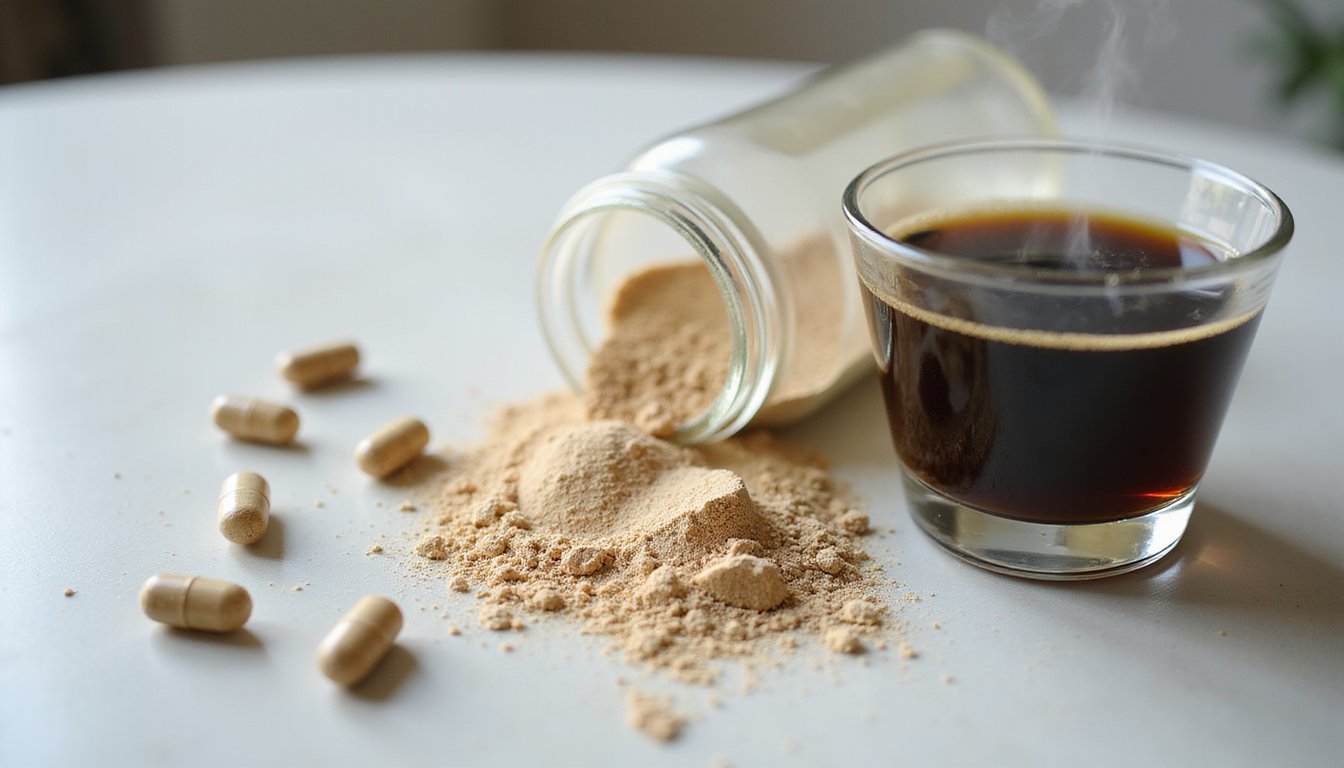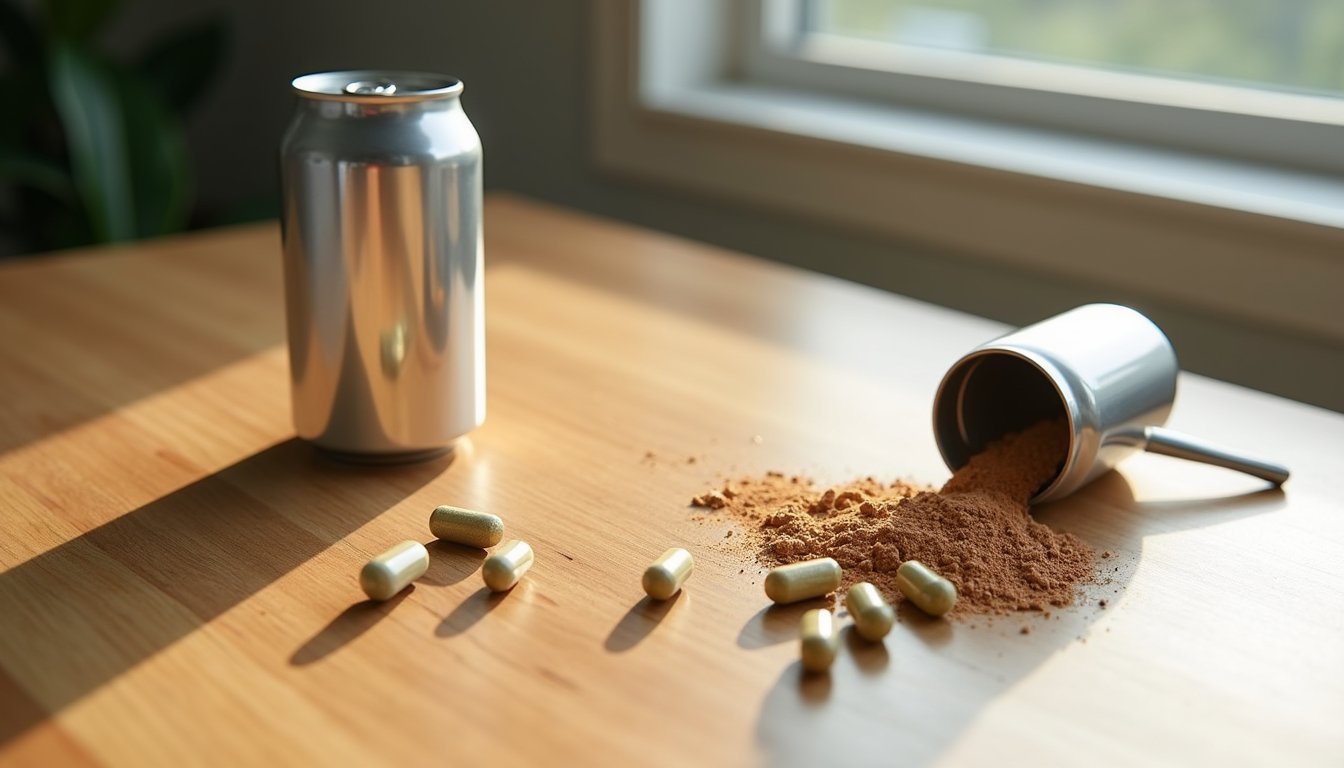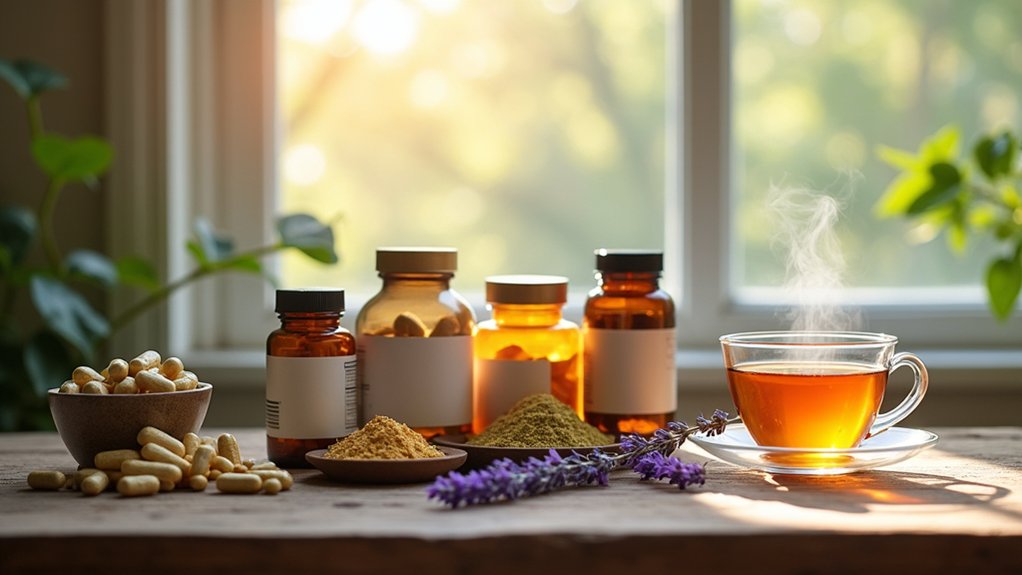Managing daily anxiety effectively requires combining proven techniques backed by scientific research. You’ll find significant relief through mindful breathing exercises that activate your vagus nerve and regulate emotions. Establish a consistent 10-minute daily meditation practice, which can reduce anxiety by 12.6% within a month. Incorporate moderate exercise 3-4 times weekly, and create a dedicated meditation space for enhanced benefits. These evidence-based methods form the foundation of a thorough anxiety management strategy that you can master with proper guidance.
The Power of Mindful Breathing: A Gateway to Calm
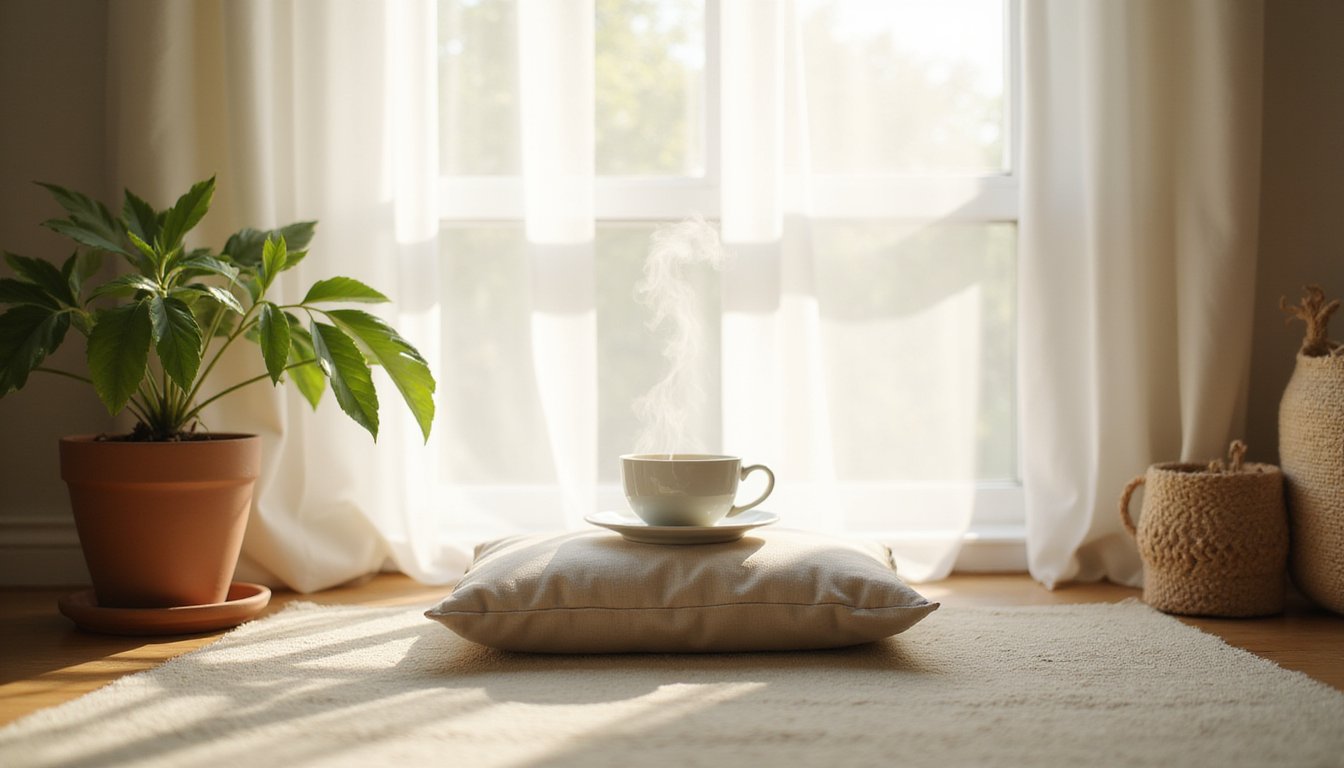
When anxiety threatens to overwhelm your daily life, mindful breathing emerges as a powerful, scientifically-validated intervention. Through consistent practice and technique mastery, you’ll activate your parasympathetic nervous system, shifting from “fight or flight” to a calmer state within seconds. Studies show that practicing cyclic sighing for just five consecutive days leads to increasing benefits. Meta-analyses reveal that breathwork produces small-to-medium effects on reducing stress and anxiety symptoms.
Research confirms that just five minutes of daily mindful breathing can significantly reduce anxiety levels. The most effective approach, cyclic sighing, involves a double nasal inhale followed by a prolonged mouth exhale. This method outperforms traditional meditation for real-time stress management. Your vagus nerve responds to this controlled breathing, improving emotional regulation and decreasing physiological arousal. Studies show that breathing exercises produce improved heart health and better sleep quality with consistent practice.
For the best results, practice with a trained guide initially, and maintain regular sessions. You’ll find the benefits compound over time, especially when incorporating mindful breathing into your daily routine for at least one month.
Building Your Daily Meditation Practice
To start your mindfulness journey, you’ll need just 10 minutes daily, which research shows can reduce anxiety by 12.6% within a month. Creating a dedicated meditation space helps minimize distractions and signals your brain it’s time to practice, whether that’s a quiet corner with a cushion or a specific chair in your bedroom. Set yourself up for success by selecting a consistent time each day, ideally in the morning before daily responsibilities begin, and use a meditation app to guide your initial sessions. Users report experiencing clearer minds and control, along with increased motivation to achieve their personal goals. Since 86.1 percent of meditators value its whole-person approach to wellness, incorporating mind, body, and spirit elements into your practice can enhance its effectiveness. Regular meditation practice helps practitioners develop focused breathing techniques that promote deep relaxation and calmness.
Getting Started With Mindfulness
The practice of mindfulness meditation offers a scientifically validated approach to managing daily anxiety through present-moment awareness. By integrating mindfulness into your daily routine, you’ll develop stronger emotional regulation while reducing distraction and stress-related health risks. Rooted in ancient Hindu traditions, this transformative practice has consistently demonstrated its effectiveness across cultures and generations.
Studies show that mindfulness-based programs have helped millions overcome chronic pain and ailments since 1979. Finding a quiet setting helps create an optimal environment for developing your meditation practice.
Start with these evidence-based steps:
- Begin with 10-20 minute sessions, focusing on your natural breathing rhythm while maintaining an upright posture
- Use breath awareness as your anchor, gently returning attention to inhalation and exhalation when your mind wanders
- Practice body scanning from feet to head to enhance physical awareness and promote relaxation
- Set a timer and create a consistent schedule, as regular practice yields measurable cognitive improvements
Remember that skill development occurs progressively, and it’s normal to experience initial challenges with concentration and comfort.
Creating Your Sacred Space
Creating a dedicated meditation environment amplifies the benefits of your mindfulness practice and strengthens your commitment to daily sessions. Choose a quiet corner free from clutter and technology, incorporating calming colors and natural elements like plants or sunlight. Set up custom meditation props, including cushions and mats, to establish physical comfort and ritual.
Enhance your space with sensory grounding objects such as candles, gentle music, or nature sounds to mask external disruptions. Studies show that over 90 percent of people meditate specifically to relax and reduce stress. Wear comfortable clothing and begin with brief stretches to prepare your body. This proven practice helps regulate blood pressure and promotes cardiovascular wellness during your sessions. Schedule sessions at consistent times, starting with 5-10 minutes and gradually increasing duration. Track your progress through a meditation journal, noting improvements in mood, sleep, and anxiety levels. Remember, your space should evolve with your needs while maintaining its sacred, dedicated purpose.
Simple Exercise Routines That Combat Anxiety
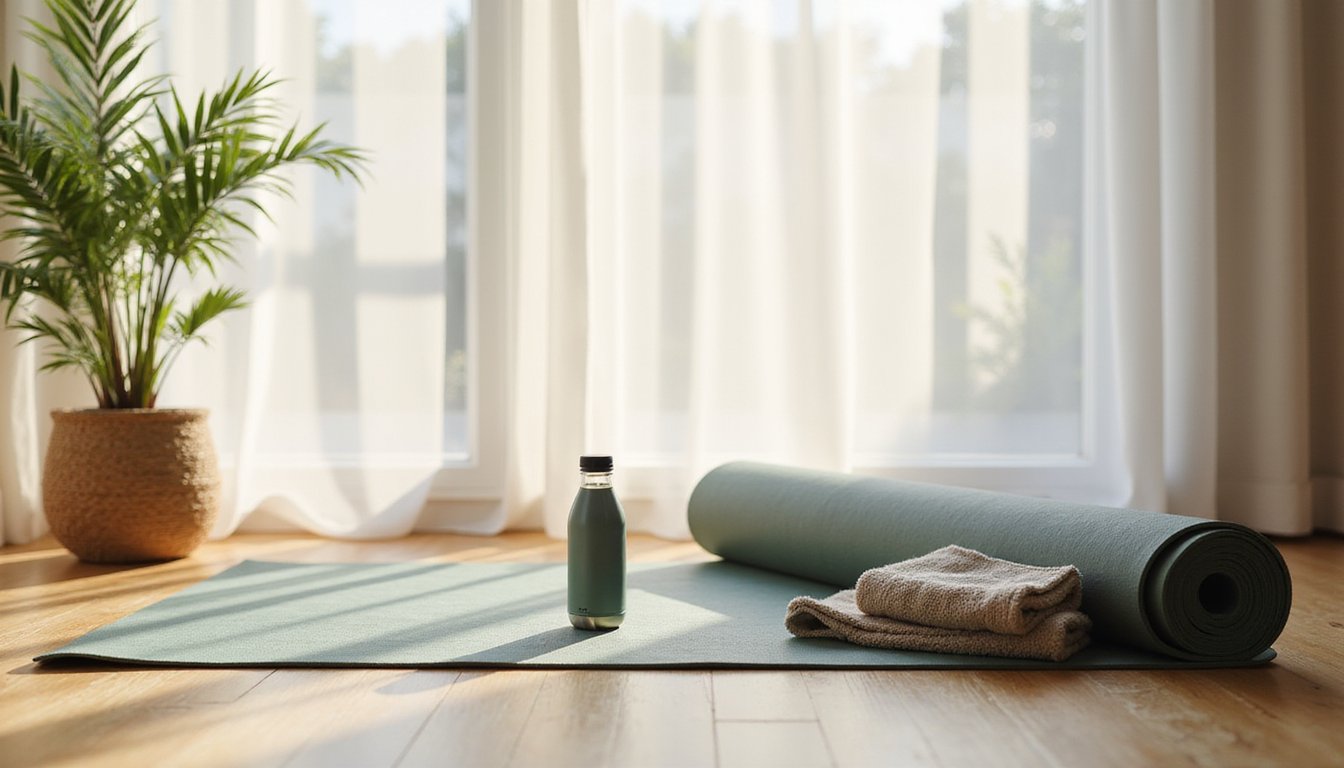
When managing anxiety through exercise, research demonstrates that specific routines can substantially reduce symptoms and improve overall well-being. Following evidence-based duration frequency considerations and intensity-based guidelines, you’ll achieve optimal ideal results through consistent practice. Studies show that exercise produces beneficial alterations in serotonergic neural systems that help regulate mood and anxiety levels. Exercise interventions have become a proven complementary treatment method for relieving anxiety symptoms while promoting physical health. Research indicates that regular exercisers maintain lower resting heart rates compared to sedentary individuals.
- Engage in moderate-to-high intensity aerobic exercise (60-90% max heart rate) for 21-30 minutes, 3-4 times weekly
- Practice 60-minute yoga sessions three times weekly, combining breathing techniques with mindful movement
- Maintain your exercise program for at least 10-16 weeks to experience meaningful anxiety reduction
- Schedule brisk walking or jogging sessions at 60-85% maximum heart rate for 20-30 minutes, ensuring consistent participation
Research confirms that aerobic exercise and yoga interventions yield the strongest anxiolytic effects, while resistance training provides supplementary benefits when maintained long-term. Your commitment to regular exercise will progressively enhance your anxiety management capabilities.
Cognitive Strategies to Challenge Anxious Thoughts
Physical activity forms just one part of anxiety management; equally powerful are the mental strategies that help rewire anxious thought patterns. Through evidence-based restructuring techniques, you can identify and challenge common cognitive distortions like catastrophizing and black-and-white thinking that fuel your anxiety.
Start by documenting your anxious thoughts and examining their validity through realistic reappraisals. CBT techniques provide practical tools for managing daily anxiety symptoms. Mindfulness exercises help you cultivate cognitive flexibility when confronting worries. Test your fearful predictions with behavioral experiments to gather actual evidence about outcomes. When you identify an anxious thought, systematically evaluate it by looking for supporting and contradicting evidence. Then, replace irrational beliefs with more balanced, realistic alternatives.
Regular practice of these cognitive strategies helps build resilience against recurring anxious thoughts. Consider keeping a thought journal to track your progress and reinforce these new thinking patterns.
Creating Healthy Sleep and Lifestyle Habits
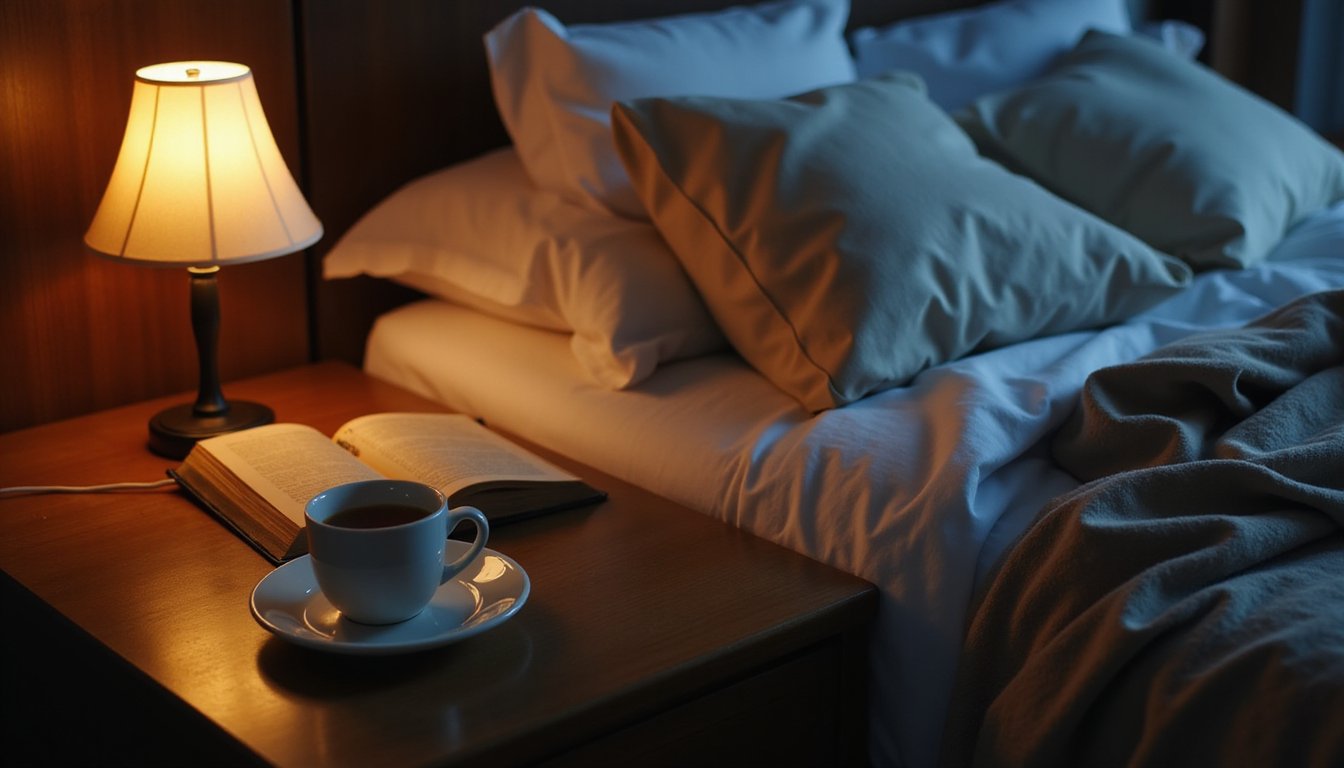
The profound connection between sleep quality and anxiety management makes establishing healthy sleep habits essential for mental wellness. Research shows that poor sleep can double your risk of mood changes and substantially increase anxiety symptoms. To effectively manage your daily anxiety through better sleep:
Sleep quality and anxiety are deeply intertwined, prioritizing healthy sleep habits is vital for managing anxiety and protecting mental wellbeing.
- Maintain consistent sleep-wake times and limit daytime napping to under 30 minutes
- Engage in regular daytime physical activity, but avoid vigorous exercise close to bedtime
- Create a relaxing evening environment by minimizing evening screen habits and exposure to blue light
- Practice pre-bedtime relaxation techniques like deep breathing or progressive muscle relaxation
These evidence-based strategies can help reduce anxiety symptoms, as studies demonstrate that improving sleep quality leads to measurable reductions in anxiety levels and rumination patterns. Your evening routine particularly impacts your ability to achieve restorative sleep and maintain emotional balance.
Connecting With Others: the Social Support Advantage
Building strong social connections stands as one of the most powerful tools for managing daily anxiety. Research shows that every increase in social support correlates with a 22% reduction in severe anxiety risk. By nurturing relationships with family, friends, and significant others, you’ll create multiple layers of protection against anxiety symptoms.
Cultivating community connections provides both emotional and practical buffers against daily stressors. Whether through family check-ins, friend meetups, or community group participation, each form of support contributes uniquely to your mental well-being. The quality of these connections matters more than quantity, focus on developing meaningful relationships where you feel genuinely supported and understood. Studies confirm that this approach works across cultures and age groups, making social support a universal strategy for anxiety management. Your investment in relationships today strengthens your resilience for tomorrow.
Quick Relaxation Techniques for Busy Days
Modern life’s relentless pace demands efficient anxiety management techniques that can be implemented anywhere, anytime. Research demonstrates that quick relaxation methods can activate your parasympathetic nervous system, rapidly reducing stress levels and promoting calm.
In today’s fast-paced world, mastering quick stress-relief techniques isn’t just helpful, it’s essential for maintaining balance and wellbeing.
- Deep breathing: Count down from 10 to 0, taking complete breaths with three-second pauses, to lower stress within two minutes
- Focused body scan: Progress through muscle groups, tensing for five seconds and releasing for ten seconds
- Visualization exercises: Picture calming environments while combining deep breathing to amplify relaxation effects
- Self-massage and mindful movement: Incorporate hand massage or mindful walking to engage both physical and mental relaxation processes
These evidence-based techniques, supported by clinical research, can effectively manage anxiety during your busiest moments while building long-term stress resilience.
Frequently Asked Questions
How Can I Manage Anxiety While Traveling or in Unfamiliar Environments?
You’ll reduce travel anxiety by maintaining routines from home, like consistent meal times and morning rituals, even in new locations. Leverage technology through meditation apps and guided breathing exercises for immediate relief. Practice grounding techniques by identifying five things you can see, four you can touch, and three you can hear. Establish micro-routines, such as morning affirmations or midday breathing resets, to create stability in unfamiliar environments.
What Role Do Pets Play in Reducing Anxiety Levels?
Pets serve as powerful anxiety reducers through their calming companionship and consistent emotional support. When you interact with pets, your cortisol levels decrease and your blood pressure lowers. You’ll experience measurable reductions in anxiety symptoms during stressful situations, with studies showing up to 46% decrease in acute stress responses. Your pet’s unconditional affection can help regulate your emotional state, though it is crucial to bear in mind these benefits are most pronounced during direct interaction.
Can Certain Foods or Supplements Help Reduce Anxiety Naturally?
Yes, you can reduce anxiety through natural relaxation aids found in specific foods and supplements. Focus on magnesium-rich foods like spinach and nuts, zinc sources such as oysters and cashews, and omega-3 fatty acids from fatty fish. As dietary anxiety reducers, probiotic-rich foods like kefir and fermented vegetables can help, while B-vitamin sources, including whole grains and avocados, support neurotransmitter function. Consider supplements like L-theanine or magnesium if you’re deficient.
How Do Weather Changes and Seasons Affect Anxiety Levels?
Weather and seasonal changes can drastically impact your anxiety levels. You’ll often notice increased symptoms during winter months, particularly if you’re susceptible to Seasonal Affective Disorder (SAD). Barometric pressure fluctuations can trigger physical discomfort and heightened anxiety, while extreme temperatures affect your body’s stress response. You’re more likely to experience anxiety during seasonal shifts, especially in winter when reduced sunlight disrupts your serotonin production and natural circadian rhythms.
When Should I Consider Medication as Part of My Anxiety Management Plan?
You should consider medication when your anxiety drastically impairs daily functioning despite trying non-drug approaches like therapy or lifestyle changes. When evaluating anxiety severity, look for persistent symptoms that disrupt work, relationships, or sleep. Before starting medication, you’ll need to consult medical professionals who can assess your specific situation. Research shows that combining medication with therapy often yields better results (effect size d=2.12) than either treatment alone.


